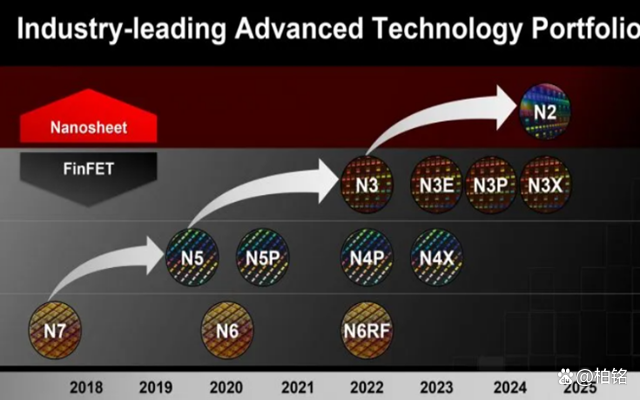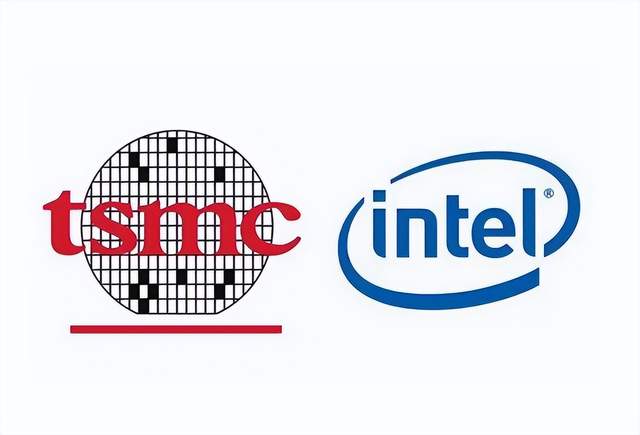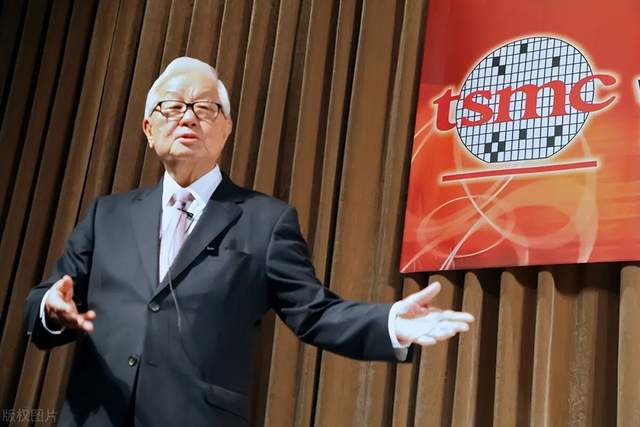After losing Huawei, TSMC's advanced technology was exhausted, and I started to learn Intel squeeze toothpaste.
Author:Bai Ming Technology Time:2022.06.19
TSMC disclosed its advanced technology research and development route a few days ago. The route map shows that the next two years will continue to improve 5nm and 3nm, and the 2nm process is expected to be checked in 2025. This method is quite Intel's style of toothpaste.

TSMC's advanced process research and development roadmap shows that after the launch of the N4P process this year, the N4X process will be launched again next year to improve the 4nm process. As for the 3nm process this year, after mass production this year, the improved version of N3E, N3P, and N3P, and the improved version of N3E, N3P, N3X process.
However, it is worrying whether its 3nm process can mass production this year. The reason is that it originally planned to produce an A16 processor for Apple with 3nm processes. The production time of the process cannot keep up with the A16 processor, which means that the mass production time of the 3nm process has been delayed.
TSMC's 3nm process is delayed, which may be related to the loss of Huawei's important partner. From 16nm to 5nm process, Huawei is an important partner of TSMC. Cooperation improves the yield, and only after the yield reaches a certain level.
The mass production of advanced craftsmanship requires a process. After successful research and development, it needs to be tried and produced. The problems are found in the trial process and then improved to improve the yield. Huawei played this important role for TSMC. Basically, it can be mass -produced as scheduled, but now after losing Huawei, the 3nm process fails to mass production as scheduled, which is even more important to Huawei's important role.

TSMC is now similar to Intel's advanced technology research and development in terms of process research and development. In 2014, Intel has been mass -produced by 14nm process, it has been stagnant. The 10nm process did not mass -produced until 2019. In that time, Intel had to continuously improve 14nm to 14nm +++, and was ridiculed by the industry as a squeezing toothpaste.
TSMC also stagnated after the 5nm process. The 3nm process was expected to mass production last year, and then delayed until the second half of this year. Now it is delayed again. After the 3nm process is delayed, it is even more doubtful whether the 2nm process can be mass -produced as scheduled. After all, there are too many techniques to improve the 2nm process. It will be upgraded from the FinFET process to Nanosheet. The lithography machine must also be upgraded from the current first -generation EUV light carved machine The difficulty of the 2nm process is far exceeding the 3nm process.
It is no wonder that TSMC has to improve the 5nm process. It is expected that 3nm will also have to improve three generations. Even if the 2nm process cannot be produced in 2025, 3nm will have to squeeze toothpaste to continue to improve.
TSMC is able to hold Niu Ear in the global chip foundry market. It is that its advanced process process has always been in a leading position, which is more advanced than Samsung and Intel. In the case of 3nm, 2nm may also face difficulties. There is a question of leading advantages. Nowadays, the United States is trying to support Intel and Samsung, and at the same time, it is developed with Japan to develop 2nm, which has caused tremendous pressure on TSMC.

Faced with the pressure of the United States, Zhang Zhongmou, the founder of TSMC, once said that the United States will not be able to surpass TSMC in terms of chip manufacturing technology. This may also show the anxiety of the accumulation of electricity. In order to cope with the pressure of the United States, in the first quarter of this year, TSMC released production capacity to mainland chip companies. The revenue contributed by mainland Chinese chip companies to TSMC has increased from 6%last year to 11%, showing that it hopes to rely on mainland China chip to check the United States Chip, in the future, maybe it will have the opportunity to restore cooperation with Huawei again.
- END -
Non -heritage | Wuhan, Hubei: "Non -heritage on the tip of the tongue" helps rural revitalization

Cai Lin's hot dry noodles, Laotong City bean skin, four seasons of beauty soup bag...
[Welcome to the Twenty New Journey] Turpan Museum and Gaochang District No. 1 Middle School to carry out the theme activities of "Exploring the Millennium Silk Road Civilization inheritance of Chinese Culture"

In order to welcome the 20th National Congress of the Party, further cultivate and...